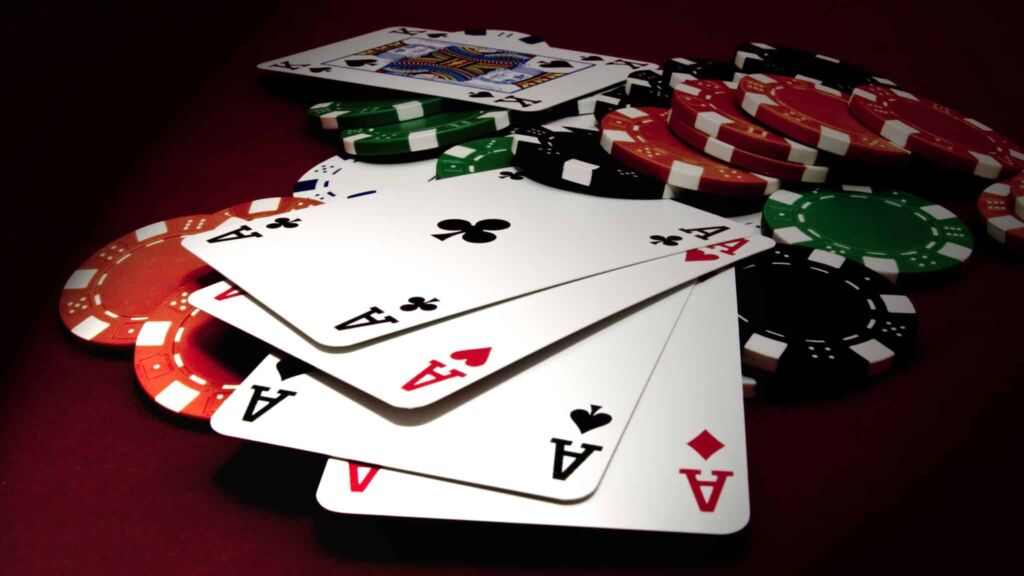Within the sphere of casino betting, countless gamblers seek ways to gain an advantage. Understanding the effectiveness of popular gambling techniques is vital for both new and seasoned players wanting to skillfully manage the inherent challenges of luck-dependent games.
Dissecting the Illusion of Certain Victories in Casinos
Casino strategies are often marketed as strict plans designed to boost win chances, implying a steady income path. However, it's critical to recognize that casinos are built on a statistical upper hand, carefully crafted to ensure they remain profitable over time, regardless of the strategies employed by gamblers.
There is a certain allure in these strategies due to the innate human wish to bring structure to randomness, nurturing a belief in the possibility of a method that might neutralize the house advantage. However, the true characteristics of casino games, especially those relying purely on luck, mean no tactical plan can fully guarantee victories or negate the house edge.
This article delves deeply into the success rates of many common gambling strategies, delivering a fair and expert examination for the gambling community. It caters to both beginners and veteran players, equipping them with knowledge to make wise choices and set realistic hopes.
Grasping the Concept of House Edge and Return to Player (RTP)
Before diving into specific tactics, it’s essential to have a firm understanding of two key ideas that shape the operation of casino games: the house edge and the Return to Player (RTP). The house edge is the casino’s built-in statistical advantage in any game, usually shown as a percentage of the total bets a player makes.
In contrast, RTP refers to the theoretical percentage of the total money wagered that a game is set to return to players over a long period. For example, if a slot machine advertises an RTP of 95% , it means that theoretically, for every $100 gambled by all players over time, the game should pay back $95 in winnings.
These percentages are not mere theoretical numbers; they serve as practical indicators of long-term profitability for casinos and the statistical disadvantage faced by players, regardless of the betting strategies they apply. Understanding the house edge and RTP is crucial for setting realistic expectations about any gambling strategy’s limitations.
To illustrate with a practical example: in American Roulette, featuring both a single zero and a double zero, the house advantage on most bets is about 5.26% , resulting in an RTP of 94.74% . European Roulette, sporting only one zero, reduces the house edge to roughly 2.7% and increases the RTP to 97.3% , showcasing how minor rule alterations can greatly affect play odds.
Exploring Common Casino Techniques: A Thorough Investigation
The Martingale Method: Increasing Bets After Losses
The Martingale method is possibly the most well-known betting system, often used in casino games with approximately 50/50 odds, like betting on red or black in roulette or playing blackjack. Its lasting appeal largely stems from its clear, straightforward nature, making it easy to grasp and use, even for gambling newcomers.
At the core of the Martingale method is a seemingly simple rule: after every loss, a player doubles their wager, and after each win, they return to their initial bet. The logic is that eventually, a win will come, and it will not only cover all previous losses from a losing streak but also deliver a small profit equal to the initial bet.
To give an example: a player kicks off with a starting bet of $10 on black at the roulette table. If the spin results in red (a loss), the Martingale method suggests doubling the next bet to $20 on black. If another loss follows on the next spin (whether red or zero), the wager doubles to $40 again; should a win come next, the player earns their winnings with a profit, then resets to the initial $10 wager for the next round.
While the Martingale method might bring small, steady wins, especially in the short run, its long-term effectiveness is significantly hampered by several built-in limitations that become more noticeable with extended gameplay. The most notable problem is the need for an exponentially growing bankroll to withstand potential long losing streaks.
A major real-world limitation severely affecting the Martingale method is casino table limits. These limits cap the maximum wager allowed and are designed to protect casinos from systems like Martingale. If a player reaches the table limit during a losing streak before they secure a win, they can't double their bet sufficiently to recover their losses, thus invalidating the core mechanism of the Martingale method, possibly resulting in significant financial hardships.
Moreover, the Martingale tactic is based on the gambler’s fallacy – an inaccurate belief that past independent events impact future probabilities. In casino games, every roulette spin, dice roll, or card deal is an independent and random event, not affected by previous results. Losses in past games do not make a future win more likely, challenging the core assumption of the Martingale system that losses must eventually be recovered.
The Fibonacci Approach: Betting in a Sequence
The Fibonacci system derives its approach from the famous mathematical pattern where each number is the sum of the two preceding it (e.g., 1, 1, 2, 3, 5, 8, 13, 21, etc.). It’s a betting system that’s notably more measured in its progression than the fast ballooning of the Martingale strategy.
In using the Fibonacci method, gamblers are advised to slowly escalate their wagers following the Fibonacci sequence after each loss. On a win, players move back two places in the sequence for their next bet. This careful pacing intends to lessen potential losses during long losing streaks while hoping to benefit from winning streaks, albeit with a more cautious stance than the Martingale.
Taking a practical example: a player begins with a $1 betting unit. If facing a losing streak, their subsequent wagers follow the Fibonacci sequence, increasing to $1 , $2 , $3 , $5 , $8 , and so on with each loss. Yet, if a win is secured, the next bet reduces by moving back two steps on the Fibonacci path, lowering the bet for the following round.
Although the Fibonacci plan is less aggressive, its long-term effectiveness in casino games remains restricted by the house's enduring advantage and constant table limits. It doesn’t erode a player’s funds as quickly as the Martingale system can, yet persistent long-losing streaks still pose considerable risks, and casino-enforced table caps can abruptly stop the betting progression, hindering potential recovery.
At the core, much like with the Martingale, the Fibonacci approach cannot conquer the casino’s intrinsic statistical advantage in purely chance-based games. While it modifies the betting sequence pace and might allow you to gamble longer, it doesn't fundamentally change the odds of achieving long-term wins in games with a house edge.
Introduction to the D’Alembert System: A Middle Ground Strategy
The D’Alembert strategy is known as a negative progression betting method that sets itself apart by adopting a more measured and modest approach to increasing bets after losses. This makes it a more cautious and conservative choice compared to other methods like the Martingale or Fibonacci systems.
In using the D’Alembert method, players are guided to increase their wager by one unit after losing a round, whereas after a win, they decrease their wager by one unit. This calculated adjustment is based on the belief that in games with roughly equal odds, wins and losses will eventually even out, creating a balance.
Picture a gambler starting with a base bet of $10 in the D’Alembert system. If their initial wager results in a loss, they increase their following bet to $20 (an additional one unit). Another loss pushes the wager up to $30 . However, if a win occurs, the player reduces their next bet by one unit to $20 . This manner of gradual adjustments contrasts sharply with Martingale's high-risk tactic of doubling, rendering D’Alembert a steadier choice.
While the D’Alembert system aims for balance and restraint, similar to other negative progression tactics, it cannot escape the reality of the house edge. Although slower betting progressions can help manage the immediate depletion of funds, achieving long-term gains in casino games, where the house has a statistical edge, remains a formidable challenge.
The D’Alembert strategy is built on the idea that wins and losses will even out naturally, a notion akin to the gambler’s fallacy. Casino games are actually designed so that even if short-term play appears balanced, the house edge ensures a long-term advantage for the casino, regardless of any betting system a player uses.
The Paroli System: Taking Advantage of Winning Runs
The Paroli system works on a different principle from previous strategies, functioning as a positive progression model. Unlike negative progression tactics that raise stakes after losses, the Paroli system focuses on increasing the size of bets following wins and decreasing after losses to capitalize strategically on perceived winning streaks.
Practically speaking, the Paroli system instructs players to double their wager after winning a round. If a loss occurs or the player achieves a sequence of consecutive wins (typically three), they reset their bet to the initial level. This betting pattern builds on the belief in 'hot streaks', periods when a player feels they have elevated odds of winning.
Consider a gambler who starts their Paroli journey with a $10 bet. A win prompts them to raise their stake to $20 . Another win doubles their next bet to $40 . After a third consecutive win or any loss, they revert the stake to the initial $10 , ready to start anew.
While exploiting short-term winning streaks might make the Paroli system appear effective, it is ultimately limited by the casino games’ probabilistic nature. 'Winning streaks' are often temporary and cannot alter the fact that game outcomes are independent, meaning the streak can end, wiping out any gains.
Regardless of positive results in the short term, the Paroli system, like all betting strategies, cannot overcome the casino’s house edge. Its aim is merely to boost winnings during favorable variance but offers no real defense against the inevitable house advantage.
Strategy Success Rates: Review of Evidence and Analysis
Extensive empirical evidence and statistical scrutiny consistently reveal that no betting strategy, however complex or popular, can negate the inherent house advantage present in all games of chance. Numerous academic studies and rigorous simulations highlight that systems like the Martingale, Fibonacci, D’Alembert, and Paroli change how wins and losses are experienced short term but don’t modify the long-term outcomes of games.
The consensus from these evaluations shows that such strategies may alter win-loss distribution initially but fail to change the expected outcome in games designed to favor the house. In games with negative player expectancy, no betting pattern can turn a losing situation into consistent profitability.
Computer simulations have underscored the strengths and weaknesses of strategies like the Martingale system. These simulations often reveal small, frequent wins that create a false impression of control, but also expose the system's vulnerability to massive losses during long losing streaks, where rapid bet increases can lead to significant financial setbacks.
Simulations of milder strategies like Fibonacci and D’Alembert indicate while they might extend a player's time at the tables, ultimately, they do not alter the final financial results, which align with the house edge. These strategies may smooth short-term swings, but they cannot change the mathematical likelihood of player loss over time.
How players gauge a strategy's 'success' frequently depends on the timeframe. Short-term variance might allow players to win with these systems, reinforcing an illusion of effectiveness, but over extensive play, the house edge becomes evident, erasing temporary gains.
Psychology of Casino Strategies
The appeal of casino strategies goes beyond simple math; psychological forces play a critical role in why gamblers are drawn to them and invest faith in their success. These strategies can offer a sense of control in the unpredictable casino environment.
For many players, sticking to a defined betting approach reduces the stress and unpredictability of gambling, turning it from a random venture into a seemingly orderly activity. Even if a strategy doesn’t hold up statistically, following it can provide a comforting sense of agency.
Cognitive biases, like the 'illusion of control' and confirmation bias, further bolster a gambler’s belief in their chosen strategy. The illusion of control leads individuals to overestimate their ability to influence outcomes in situations governed by chance, making them believe their strategic bets are affecting results when they are not.
Confirmation bias is a strong mental tendency that reinforces belief in certain strategies. Gamblers often focus on times their preferred strategy led to winnings, while ignoring situations where it didn't prevent losses. This selective memory skews their perception of how successful the strategy is overall, misleading them into believing it works better than it actually does.
The gambling world's social aspect significantly influences belief in betting strategies. Within both online and offline communities, shared beliefs and mutual agreement on certain strategies can make them seem more effective, creating a kind of group confirmation bias. This social support is reinforced through shared stories of strategy success, which strongly affects individuals' trust in these betting systems, regardless of their actual statistical success.
Misunderstanding of Responsible Gambling and Betting Strategies
Understanding the inherent constraints of gambling strategies is crucial, and not just academically. It's essential for promoting responsible gambling habits and reducing potential harm. Recognizing that these strategies are primarily for entertainment rather than assured profit is vital, as assuming they can reliably generate income is a misconception that often leads to financial difficulties and other gambling-related issues.
Responsible gambling is all about setting realistic goals, understanding the risks of casino games, and gambling within one's financial means. Within this context, casino strategies can serve to add structure to gambling for entertainment purposes, but should not be seen as a reliable way to beat the house edge consistently.
Education on the true math behind casino games, and a clear understanding of the limits of betting strategies, is vital for promoting responsible gambling. Gamblers who understand the math and psychological factors are better equipped to make informed and responsible gambling choices, reducing risks and enhancing the entertainment value of gambling.
Conclusion: Strategies Should Enhance Fun, Not Promise Profit
To conclude, popular casino strategies like the Martingale or Fibonacci suggest a structured approach to betting but do not statistically overcome the house edge over time. They should be seen as ways to make gambling more engaging and methodical, not as foolproof plans for consistent financial returns.
People interested in gambling, from beginners to experienced players, should adopt a realistic approach. Acknowledge the house edge, use strategies for added structure only, and prioritize fun over elusive wins. True responsible gambling means making informed choices, managing funds wisely, and enjoying the games for their entertainment value without falling for the myth of beatable odds.
In the end, the best way to enjoy casino gaming is to embrace it as entertainment, recognizing that all forms of gambling involve risks and that no strategy can guarantee long-term profits. Responsible play and informed choices are crucial for a positive gambling experience.
External Resources:



